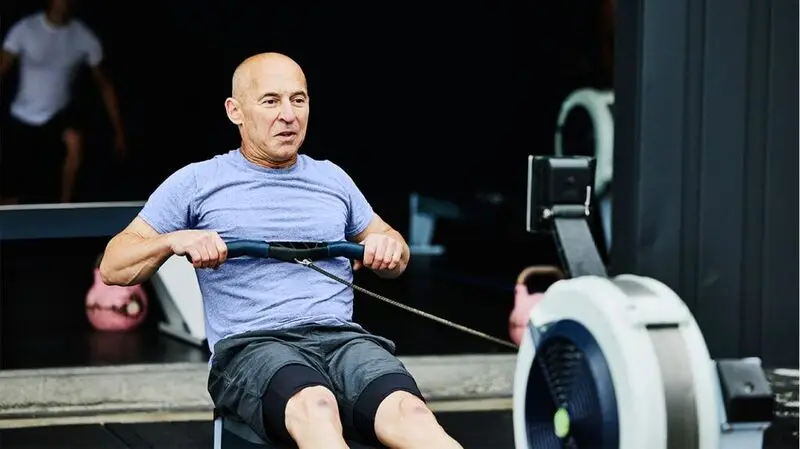
- Sudden cardiac arrest is a serious and often fatal condition.
- For the first time, a new study investigates the factors that increase the risk of sudden cardiac arrest.
- The researchers identify more than 50 factors associated with increased or decreased risk.
Sudden cardiac arrest occurs when the heart suddenly stops entirely or fails to pump adequately. Because of its sudden nature, it is often fatal.
In fact, if it occurs outside of the hospital, there is less than a 10% chance of survival.
People with existing cardiovascular problems have an elevated risk of sudden cardiac arrest, but when it occurs in people without these issues, it is often not clear why.
A new study, which appears in the Canadian Journal of Cardiology, investigates this condition by examining the risk factors associated with sudden cardiac death.
In total, they identified 56 nonmedical risk factors. They also calculated that 40–63% of sudden cardiac arrests could be prevented if these factors were reduced.
Importantly, as the authors explain, lifestyle modifications accounted for the “largest proportion of preventable cases.”
The researchers hope their work will help clinicians move away from reacting to sudden cardiac arrest and toward preventing it.
As the name suggests, during sudden cardiac arrest, the heart suddenly stops beating or stops sending sufficient blood around the body. Globally, there are an estimated 2 million cases per year related to this heart health event.
To date, the most well-established risk factors for cardiac arrest are a pre-existing cardiovascular issue, as well as:
- respiratory arrest — for instance, when someone drowns or chokes
- diabetes — this can cause sudden changes in electrolyte levels, which affect the heart
- certain medications, including antibiotics and diuretics
- physical trauma — such as from a sudden injury, especially in the region of the heart.
Beyond these factors, sudden cardiac arrest is difficult to predict, so most research has focused on the best ways to resuscitate these individuals rather than prevent its occurrence.
The scientists had access to data from the UK Biobank, totaling 502,094 middle-aged and older adults, whom they followed for an average of 13.8 years.
The individuals in this database have provided long-term, detailed information about a wide range of factors, including lifestyle factors such as diet and exercise.
They also provided blood and urine samples, allowing researchers to analyze their DNA and biomarkers, and they underwent various medical imaging tests.
To make sense of the risk factors involved in sudden cardiac arrest, the scientists used Mendelian randomization. This technique helps identify environmentally modifiable influences on diseases using genetic information.
The analysis unearthed 56 risk factors associated with sudden cardiac arrest.
Medical News Today spoke to Bradley Serwer, MD, an interventional cardiologist, chief medical officer at VitalSolution — an Ingenovis Health company — who was not involved in the study, about the results.
“This study is the first to examine associations between modifiable risk factors and sudden cardiac arrest incidence,” explained Serwer. “They grouped the risk factors into five categories: lifestyle, local environment, physical measures, psychosocial factors, and socioeconomic status.”
Many of the risk factors, as Serwer explained, were as expected, “such as smoking, poor diet, and lack of physical activity.”
Others, however, were more surprising. Next, we will take a look at some of the specific factors identified in this study. In particular, we will focus on factors that are — at least partially — within an individual’s control.
In this category, some of the risk factors with the strongest relationships with sudden cardiac arrest included:
- smoking tobacco
- napping during the day
- watching large amounts of television
- low intakes of fruits and vegetables
- finding it hard to wake up.
At the same time, certain factors were associated with a reduced risk of sudden cardiac arrest, and these included:
- regular vigorous physical activity
- drinking alcohol
- drinking red wine
- drinking white wine and champagne.
Some previous research has suggested that moderate red wine consumption might reduce cardiovascular disease risk, but that overall alcohol, white wine, and champagne seem protective is more surprising.
Although, as the authors explain, their research also found that both low and high intakes of wine are linked to a lower risk of sudden cardiac arrest.
Taken together, the study results suggest that following a healthy diet, getting adequate sleep, stopping smoking, and keeping physically active are the best ways to reduce the risk of sudden cardiac arrest.
MNT spoke to Maddie Gallivan, RD, a registered dietitian who was not involved in the study. Gallivan offered some advice on what dietary choices can help protect heart health.
“Maintaining heart health is all about reducing inflammation through everyday food choices,” Gallivan explained.
“That means cutting back on highly processed foods where possible — like processed meats and packaged snacks — and opting for more whole, anti-inflammatory foods like fruits, vegetables, legumes, nuts, seeds, oily fish, and whole grains.”
– Maddie Gallivan, RD
“These foods are the cornerstone of the Mediterranean diet, which is one of the most widely studied eating patterns for heart health and is linked to a lower risk of cardiovascular disease,” she noted.
While this analysis finds that alcohol may reduce your risk, too, it is likely to increase your risk of other health conditions. Moderation is key.
In the psychosocial category, here were some of the factors with the strongest link to an increased risk:
- feeling tired or lethargic
- frequently feeling unenthusiastic
- loneliness
- frequently feeling depressed.
Conversely, being involved in social and leisure activities was linked to a reduced risk of sudden cardiac arrest.
Loneliness is a
Connecting with others can reduce loneliness, bring purpose to life, and generally lift mood.
Also, “ensuring that patients have access to mental health services to address anxiety or depression may be highly beneficial,” Serwer told MNT.
In this category, some of the most significant risk factors for sudden cardiac arrest were:
- larger waist circumference
- higher levels of body fat
- higher BMI.
Factors linked to reduced risk were:
- forced expiratory volume — a measure of lung function
- peak expiratory flow — also a measure of lung function
- hand grip strength.
According to these factors, and in line with what we have already covered, following a healthy, plant-rich diet and keeping regularly active are likely to help reduce risk by increasing fitness and helping individuals move toward a healthier weight.
“Given that sudden cardiac arrest is multifactorial,” Serwer told MNT, “prevention must be approached from multiple perspectives.”
“Individuals at higher risk of sudden cardiac arrest should consult their cardiologist to identify necessary changes to lower their risk.” He told us that the approach to prevention “depends on the specific type of abnormality.”
“Generally,” Serwer continued, “healthy lifestyles, regular exercise (when appropriate), a well-balanced diet, avoidance of smoking, and weight loss (when needed) are recommended.”
MNT also reached out to Srihari Naidu, MD, who is soon to begin his role as president of the Society for Cardiovascular Angiography and Interventions. Naidu, who was not involved in the study, is also a professor of medicine at New York Medical College.
He outlined some issues related to overturning these lifestyle factors. “These, in my opinion, are only modifiable on a population level by truly tackling socioeconomic and education disparities that over time allow all people the financial and time flexibility and resolution to take on healthier habits.”
Of these factors, though, he believes that diet may be the best to target by eating “more fruits and vegetables and focusing on lower BMI.” However, he also explained that this may still be challenging as these “foods are higher cost and less readily available.”
“In the longer term, prioritizing education for all so that everyone has a chance to improve their socioeconomic status over time will also aid tremendously in reducing sudden cardiac arrest rate.” Also, he recommended encouraging people to “find outlets to improve mood, such as healthy hobbies, regular exercise, and social interaction.”
“While this study is intriguing, it does have several limitations,” Serwer told MNT. “The study is designed to assess for association rather than prove causality,” he explained.
“Additionally, it did not differentiate between the different types of sudden cardiac arrest, which is crucial when addressing the pathologic mechanisms of the event,” he noted.
Experts categorize sudden cardiac arrest in different ways. These categories include ventricular fibrillation, marked by a chaotic heart rhythm and pulseless electrical activity, where an ECG shows electrical activity, but the heart is not pumping blood effectively.
Sudden cardiac arrest can also be categorized by the underlying cause, including cardiac causes, like coronary artery disease, or noncardiac causes, such as an electrolyte imbalance.
It is possible that these subcategories have different risk factors.
The authors of an accompanying editorial published alongside the study, Nicholas Grubic, MSc, and Dakota Gustafson, PhD, from Queen’s University in Kingston, Canada, have expressed a hope that this study will help doctors move gradually from reaction to prevention.
In a press release, they said that:
“To achieve dramatic reductions in the immense burden sudden cardiac arrest places on the health system, this narrative must extend beyond acute intervention to a broader, population-wide strategy that prioritizes primary prevention.”
This, they acknowledged, will be a challenging task: “While shifting from responding to sudden cardiac arrest to actively preventing its occurrence may seem straightforward, it is far more complex in practice.”





